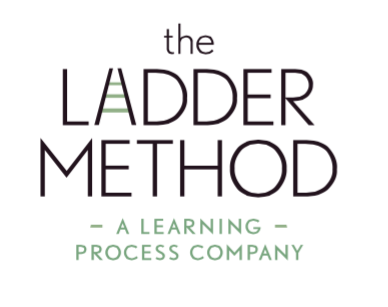How Pomodoro Technique Helps People With ADHD Improve Focus
The Pomodoro Technique is a time management method that helps people with ADHD improve focus and productivity. This technique uses 25-minute work intervals followed by short breaks to combat procrastination and mental fatigue. Francesco Cirillo created this system in the late 1980s using a tomato-shaped timer.
People with ADHD often struggle with maintaining attention, starting tasks, and managing hyperfocus episodes effectively. The Pomodoro Technique addresses these challenges by breaking work into structured, manageable time blocks. It provides clear start and stop signals that prevent burnout while keeping you on track.
This time management strategy works by dividing your day into focused work sessions called Pomodoros. Each session lasts 25 minutes, followed by a 5-minute break to rest and recharge. After completing four cycles, you take a longer 20 to 30-minute break for deeper recovery.
Research shows that human attention spans range from 8 seconds to 15 minutes for sustained focus. The Pomodoro Technique aligns with your brain's natural attention capacity, making it easier to stay productive. This method is customizable, allowing you to adjust work intervals and break times based on your needs.
Whether you have ADHD or simply want better time management, the Pomodoro Technique offers practical solutions. Learn how to implement this productivity system, avoid common pitfalls, and adapt it to your workflow.
Understanding the Pomodoro Technique
The Pomodoro Technique offers a simple six-step approach to build concentrated work sessions. Similar to time blocking, it relies on a timer. The timer signals when to take short or extended breaks while working on tasks.
Origins of This Method
Francesco Cirillo developed the Pomodoro Technique during the late 1980s. The word "Pomodoro" means tomato in Italian. This name comes from Cirillo's tomato-shaped timer that he used to apply his productivity method.
Here's How the System Operates
Work Session
Select the assignment, task, or project you need to finish.
Set your timer for 25 minutes and commit to working without interruptions.
Continue working steadily until the timer goes off.
Rest Period
Once the timer rings, stop your task immediately. Mark a checkmark on paper to show one Pomodoro cycle is done.
Take a quick 5-minute break away from your work. When you restart, set the timer for another 25-minute session.
Complete 4 Pomodoro cycles, then reward yourself with a longer break. This extended rest should last 20 to 30 minutes.
Why This Technique Delivers Results
Staying focused on tasks is crucial for managing your daily responsibilities effectively. Research shows humans can only concentrate for 8 seconds to 15 minutes. This makes time management absolutely critical for success.
The Pomodoro Technique divides lengthy work periods into smaller, manageable chunks of time. This structure matches your brain's natural ability to maintain attention. However, the recommended work and break intervals may not suit everyone's needs perfectly. Understanding executive function can help you optimize these intervals.
For People With ADHD
The Pomodoro Technique can benefit those with ADHD by organizing tasks into brief focused intervals. It also establishes time limits for work sessions. This helps avoid spending too much time hyperfocusing on one single task.
However, people with ADHD may need more time to enter focus mode initially. The standard 25-minute work period might not provide enough time for productive work. Some individuals find success with shorter work sessions instead. They prefer brief 1- or 2-minute breaks between tasks.
If you have ADHD, you understand your needs better than anyone else. Feel free to adjust the timed intervals to match your personal working style perfectly. Consider exploring executive functioning coaching to develop personalized strategies that work for you.
For Those Who Struggle With Taking Breaks
Some people find it challenging to take breaks, even when they feel tired. Fatigue signs often go ignored when you're deeply engaged in work.
The Pomodoro Technique can help you manage time more effectively if this sounds familiar. It provides both visual and audio cues to pause your work. These signals remind you to rest, recharge, and refresh for a few minutes.
But what happens when the timer rings and you want to continue working?
If this occurs frequently, consider adjusting the time intervals between your breaks. The key is recognizing when your focus typically begins to fade. Set your timer to stop just moments before that attention drop happens. Metacognitive strategies can help you identify these patterns more effectively.
For People Who Have Difficulty Starting Tasks
Time management issues sometimes stem from struggling to find motivation to begin work. The Pomodoro Technique can act as an effective procrastination prevention tool in these situations.
For instance, the timed nature of tasks offers a psychological advantage to get started. You can tell yourself, "I only need to work for 25 minutes total." Then you get to take a break afterward, which makes starting feel easier.
This approach helps spark the motivation needed to begin tasks you're avoiding. It works especially well for chores or assignments you find particularly uninteresting or boring. Many students have found success combining this technique with structured tutoring programs for academic tasks.
Time Management Pitfalls to Avoid
You might feel tempted to modify the Pomodoro Technique too extensively while adapting it. Making excessive changes can reduce the method's overall effectiveness and impact significantly.
Here are some of the most common temptations you may encounter during implementation. We'll also explain how to handle them properly:
Why Are Extended Breaks Discouraged?
Extended breaks between focus sessions could work if you transition back quickly. Getting into focus mode fast is essential for this approach to succeed. However, longer breaks might hurt your productivity if you struggle with transitions. Moving between free time and work time becomes harder with extended rest periods. Executive function resources offer additional guidance on managing transitions effectively.
If I'm Focused, Why Shouldn't I Extend Task Time?
Your brain can process information during long tasks without much trouble initially. However, one scientific review indicates that prolonged sustained attention causes mental fatigue. This tiredness can impair your cognitive function over time. It may also increase the number of errors you make.
That said, extending task time might benefit you in certain situations. Some people need more time to adjust to tasks and enter focus mode. In this case, give yourself extra minutes to transition before starting the timer. This adjustment could prove more effective for your workflow.
Additionally, following the timer helps if you have ADHD and experience hyperfocus episodes. The timer prevents hyperfocus from limiting your ability to tackle other to-do list items. Learn more about improving executive function with ADHD through proven strategies.
What Should I Do If I Get Interrupted Mid-Task?
Disruptions can occur even during your designated work time blocks. One study found that these roadblocks are challenging to overcome successfully. They may also lead to more errors appearing in your work output.
Don't feel defeated if you've been pulled away from your chosen task. Instead, take a minute to collect yourself and regroup your thoughts. Then work toward getting back on track as quickly as possible. This helps minimize the impact of the interruption. Understanding what executive functioning is helps you develop better recovery strategies.
Additional Helpful Tips for ADHD
Beyond the Pomodoro Technique, people with ADHD recommend several key productivity strategies. These hacks help manage time more effectively throughout the day. Some methods include using daily planners, establishing clear boundaries, or relying on reminder apps.
The Pomodoro Technique works ideally for some individuals with ADHD. However, others experience greater productivity when they embrace hyperfocus mode without any interruptions. Teaching executive function resources provide valuable insights for different learning styles.
The key takeaway with ADHD time management tools is experimentation and flexibility. Allow yourself to experiment with the Pomodoro Technique until it fits your style. Adjust it to meet your unique work preferences and needs. Working with our coaching team can accelerate this discovery process.
If you're still struggling to manage time effectively, additional support may help. For more insight on living with ADHD symptoms, executive function library resources and executive functioning tips can provide guidance:
Strategies for building and maintaining your motivation levels consistently
Practical tips to complete tasks and projects you've started
Methods for managing and coping with ADHD-related forgetfulness effectively
Creative ideas and techniques to help you accomplish your goals
How The Ladder Method Enhances Your Pomodoro Practice
Combining the Pomodoro Technique with the help of The Ladder Method creates a powerful productivity system for long-term success. While Pomodoro helps you manage daily tasks through timed intervals, The Ladder Method provides the strategic framework. This combination ensures you're not just working efficiently, but working on the right things.
The Ladder Method helps you prioritize which tasks deserve your Pomodoro sessions each day. It eliminates decision fatigue by clarifying your most important objectives before you start timing. This means every 25-minute work block moves you closer to meaningful goals rather than busy work. Explore how our program differs from traditional approaches.
When you structure your Pomodoro cycles around The Ladder Method's prioritization system, productivity becomes intentional. You'll spend less time wondering what to work on next and more time making progress. This strategic approach prevents the common trap of being efficient with unimportant tasks. Read about student results achieved through this methodology.
Visit our website to discover how this proven framework can transform your time management strategy. Integrate their systematic approach with Pomodoro timing techniques for maximum results. This combination helps people with ADHD and busy professionals achieve consistent progress on their most important work. Consider adult executive functioning leadership programs for comprehensive support. Learning how to learn as a meta-skill enhances both methods. Learn more about our founding story and meet our founder.
Conclusion
The Pomodoro Technique offers a powerful time management solution for people with ADHD and anyone seeking better focus. This method breaks down overwhelming tasks into manageable 25-minute work intervals with scheduled breaks. It helps combat procrastination, prevents burnout, and maintains sustained attention throughout your workday.
Remember that flexibility is key when implementing this technique into your routine. Adjust the work periods and break times to match your personal needs and attention span. Some people thrive with standard intervals, while others need customized timeframes for optimal productivity. Understanding metacognition helps you make better adjustments.
Start experimenting with the Pomodoro Technique today to discover what works best for you. Track your progress, notice when your focus naturally fades, and modify accordingly. Whether you have ADHD or simply want to improve time management, this technique provides structure. Take action now and transform how you approach your daily tasks and long-term projects. Contact our team to learn how we can support your productivity journey. Explore our blog for more strategies and insights. Connect with tutors and coaches in your area for personalized support.
Frequently Asked Questions
1. How long should a Pomodoro work session last?
A standard Pomodoro work session lasts 25 minutes with a 5-minute break afterward. However, you can adjust this timeframe based on your attention span and personal needs. Some people work better with 15-minute sessions, while others prefer 45-minute intervals for deeper focus.
2. Can the Pomodoro Technique help with ADHD symptoms?
Yes, the Pomodoro Technique can significantly help manage ADHD symptoms by providing structure and time limits. It prevents hyperfocus on single tasks and creates regular break reminders. The technique also makes starting tasks easier by limiting work time to manageable chunks.
3. What should I do during my Pomodoro breaks?
Use your breaks to step away from your work completely and recharge your mental energy. Stretch your body, grab a healthy snack, take a short walk, or practice deep breathing exercises. Avoid screens and work-related activities to give your brain proper rest before the next session.
4. How many Pomodoro cycles should I complete daily?
The number of Pomodoro cycles varies based on your schedule and energy levels throughout the day. Most people complete 8 to 12 cycles during a standard workday. Listen to your body and adjust accordingly to maintain productivity without experiencing burnout or mental fatigue.
5. What happens if I get interrupted during a Pomodoro session?
If an interruption occurs, pause your timer and handle the urgent matter quickly if possible. Once resolved, take a moment to refocus and reset your timer for a fresh session. Track frequent interruptions to identify patterns and establish boundaries that protect your dedicated focus time.




